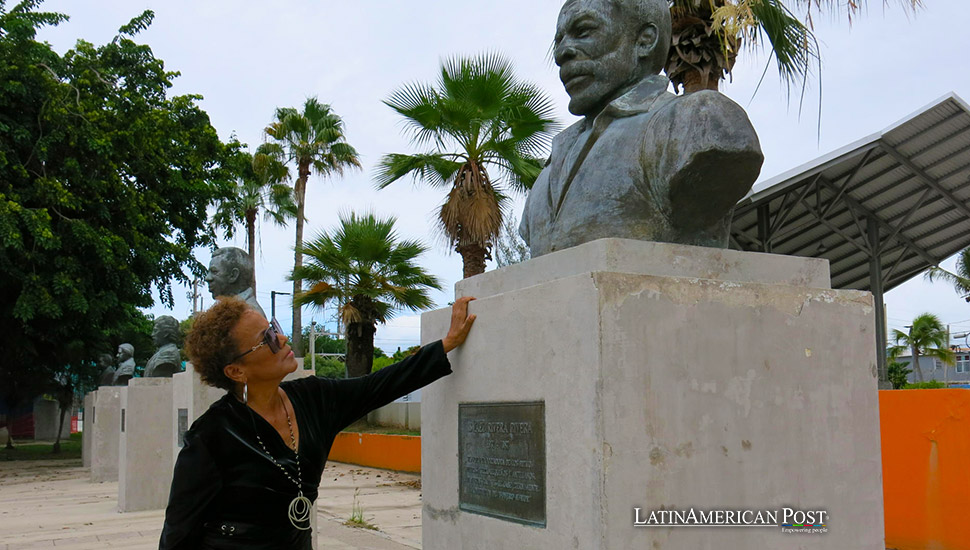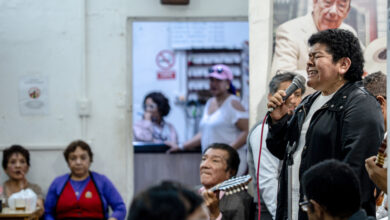Puerto Rican Choco Orta: A Trailblazer in Salsa Music and Gender Equality

Puerto Rican Choco Orta becomes the first female salsa artist to be honored with a bust in San Juan’s Plaza de los Salseros, marking a significant step towards gender inclusivity.
San Juan’s Plaza de los Salseros was adorned with a new addition this Sunday—the first bust dedicated to a female salsa artist, Purto Rican Choco Orta. The renowned artist, who has had a 38-year musical career, expressed to EFE that this tribute signifies an opening for other female colleagues who have made significant contributions to salsa. Orta emphasized that the initiative by San Juan’s Mayor Miguel Romero sends a powerful message of inclusion, asserting that “the barriers that kept women behind are over.”
The bust of Orta, created by María Elena Perales, joins the ranks of nine other salsa legends in the plaza, all of whom are men: Ismael Rivera, Rafael Cortijo, Héctor Lavoe, Tito Puente, Marvin Santiago, Cheo Feliciano, Tommy Olivencia, Roberto Roena, and Pedro ‘Pellín’ Rodríguez. “I have every right to deserve this honor,” Orta stated. “I have been a consistent, determined figure in this genre. I have the right to belong, to be seen, and to be respected.”
Virgen Milagros Orta Rodríguez, known by her stage name Choco Orta, shared that she has performed alongside several of her fellow honorees. Feliciano and Roena are among the artists she collaborated with, and Tito Puente himself dubbed her ‘La Reina del sabor’ (The Queen of Flavor), which became the title of one of her albums. Orta’s musical journey has seen her perform with orchestras such as those led by Nacho Sanabria, Roberto Angleró, Waldo Borres, and Julio “Gunda” Merced. Her impressive career also includes recording over 108 songs and performing internationally in countries like Senegal, France, Canada, Cuba, Colombia, the United States, the Dominican Republic, and Puerto Rico. Orta has also appeared in theater productions and films such as Hemingway (1988) and Assassins (1995).
Advocating for Female Representation
Orta hopes that her bust will pave the way for similar tributes to other female salsa artists, both Puerto Rican and Cuban. She named several artists she believes deserve recognition, including Fe Cortijo, Yolanda Rivera, La India, Myrta Silva, Celia Cruz, La Lupe, Celeste Mendoza, and Felipa Graciela Pérez y Gutiérrez. Orta honored these figures in her song “Homenaje a las soneras,” featured on her album Choco Swing (2011), which calls for unity among female salsa artists to benefit both women and the genre.
“I have always believed in the unity of women in salsa,” Orta lamented. “I don’t understand why we are not more united.” She described the mentioned artists as “extraordinary women who have made beautiful contributions to salsa.”
A Voice for Women
Orta also sees herself as a spokesperson for women, using her platform to discuss issues that others in the industry might shy away from, including her sexual orientation. Starting her artistic career in dance and theater, Orta finds the recognition of her bust profoundly significant. “I don’t want to die and then have the radio play 24 hours of my music without me hearing it. Play it now. Why not create a 24-hour program featuring my music, Fe Cortijo’s, La India’s? All gratifications should happen during one’s lifetime.”
Despite the honor received this Sunday, Orta still has significant goals she wishes to achieve. She aims to win a Grammy, publish her book, and see one of her songs become a radio hit. She remains determined and optimistic about her future accomplishments, which will undoubtedly add to her already impressive legacy.
Choco Orta’s recognition with a bust in Plaza de los Salseros is more than a personal accolade; it is a monumental step towards gender equality in the salsa genre. Her career, marked by resilience and excellence, inspires many. This tribute honors her legacy and sets a precedent for future generations of female salsa artists, making a significant impact on the Latin American cultural scene.




